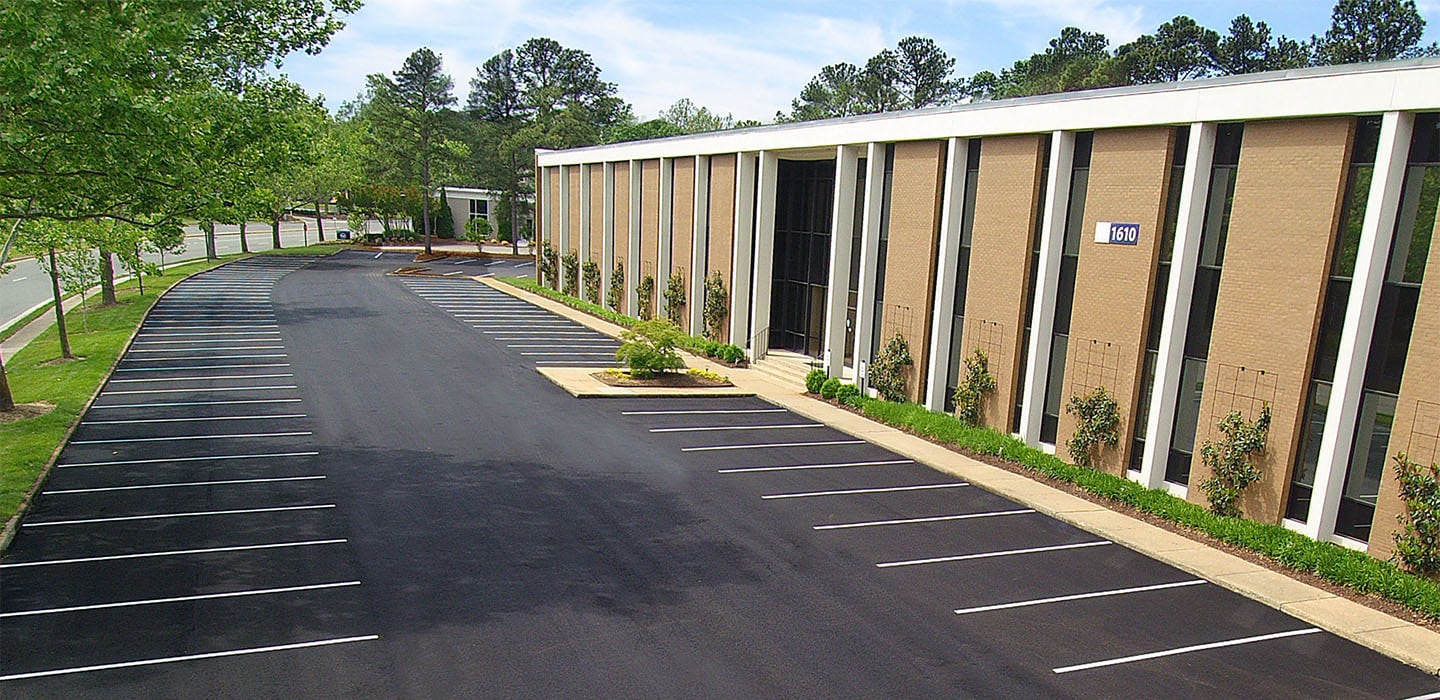As much as we avoid using industry-specific terminology when discussing with our clients, sometimes learning these terms can help customers better describe what they are seeing, what they might need, and what will happen when they hire a commercial paving company to renew or replace their asphalt surfaces.
These are some of the essential terms to know when dealing with an asphalt paving project:
| Aggregate | Crushed stone, gravel, or sand mixed with asphalt binder to create asphalt pavement. It provides strength and durability to the surface. |
| Alligator Cracking | A series of interconnected cracks resembling an alligator’s skin, typically caused by fatigue or a failing base layer. |
| Asphalt Binder | A sticky, tar-like substance made from petroleum that binds aggregates together to form asphalt. It also provides waterproofing and flexibility. |
| Base Course | The foundational layer of material beneath asphalt pavement, typically made of compacted aggregate. It supports the pavement and ensures drainage. |
| Cold Mix Asphalt | A mixture of asphalt binder and aggregate used for temporary repairs or in low-traffic areas, typically applied without heating. |
| Compaction | The process of using heavy machinery to compress asphalt material, removing air pockets to increase density and strength. |
| Crack Sealing | A maintenance process where cracks in asphalt are filled with a flexible material to prevent water infiltration and further damage. |
| Drainage | The system or design that ensures water is directed away from the pavement, preventing erosion and structural damage. |
| Edge Cracks | Long cracks along the pavement edges caused by lack of support, poor drainage, or heavy vehicle loads. |
| Fatigue | The progressive structural deterioration of asphalt pavement under repeated traffic loading, manifested as cracking (e.g., alligator cracking) once the pavement’s fatigue life is exceeded. |
| Freeze-Thaw Cycle | The repeated process of water infiltrating pavement, freezing and expanding, then thawing and contracting. These cycles generate internal stresses that can lead to cracking, potholes, and other surface failures. |
| Geotextile Fabric | A synthetic material placed between the subgrade and base layers to improve drainage, support, and stability. |
| Hot Mix Asphalt (HMA) | A common type of asphalt mixture made by heating aggregate and asphalt binder, ensuring a strong, durable, and weather-resistant surface. |
| Joint Sealant | A material used to fill and seal joints between asphalt sections or between asphalt and other surfaces, preventing water infiltration. |
| Load-Bearing Capacity | The maximum weight or load an asphalt pavement can support without structural failure, determined by its design and materials. |
| Milling | The process of removing the top layer of asphalt (or more) to prepare the surface for a new overlay or full reconstruction. |
| Overlay | A new layer of asphalt applied over existing pavement to restore its surface, improve appearance, and extend its lifespan. |
| Oxidation | A chemical reaction between asphalt binder and atmospheric oxygen. Over time, oxidation hardens the binder, reducing flexibility and making the pavement more prone to cracking and raveling. |
| Pavement Markings | Painted or thermoplastic lines and symbols applied to asphalt surfaces for traffic control and safety. |
| Permeability | The ability of asphalt pavement to allow water to pass through its surface, which can affect drainage and durability. |
| Pothole | A depression or hole in the pavement caused by the failure of the asphalt layer and subbase, often due to water infiltration and freezing/thawing cycles. |
| Raveling | The gradual disintegration of an asphalt surface caused by the loss of aggregate, often due to age or poor compaction. |
| Reclaimed Asphalt Pavement (RAP) | Recycled asphalt material from old pavements, crushed and reused in new asphalt mixtures, reducing waste and costs. |
| Reflective Cracking | Cracks that form on the surface of an asphalt overlay, mirroring underlying cracks in the base layer or old pavement. |
| Rutting | Depressions or grooves formed in asphalt over time due to heavy traffic loads, often indicating a structural issue. |
| Sealcoat | A protective coating applied to the surface of asphalt pavement to prevent oxidation, water penetration, and wear from traffic. |
| Striping | The process of applying or repainting lines on asphalt surfaces, such as parking lot spaces or road lanes. |
| Structural Integrity | The overall strength and stability of the asphalt pavement, considering all layers, from the subgrade to the surface. |
| Subbase | The layer of material (often crushed stone or stabilized soil) placed between the native subgrade and the base course. It provides additional load distribution, frost protection, and drainage. |
| Subgrade | The native soil or prepared surface beneath the base course, which must be stable and properly compacted to support the pavement. |
| Tack Coat | A light layer of liquid asphalt applied between pavement layers to create a bond and ensure stability. |
| Thermal Cracking | Cracks caused by temperature fluctuations, where asphalt expands and contracts, leading to stress and fractures. |
If you have a question about your upcoming paving project, or you want to try your hand at using some of these asphalt-related terms, contact Ruston Paving and we will put you in touch with one of our paving experts in one of our seven divisions.

